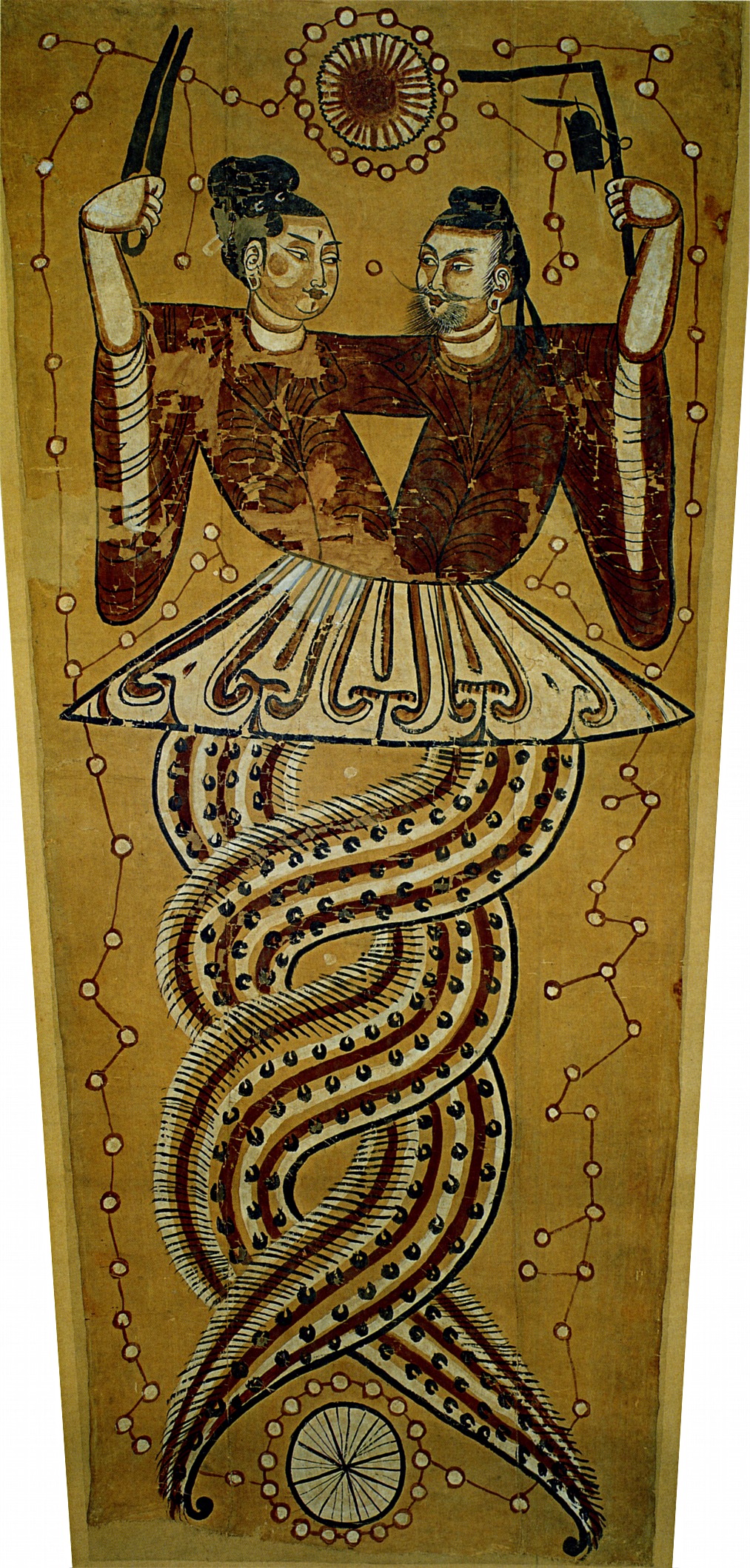|
Zi (title)
The nobility of China was an important feature of the traditional social structure of Ancient China and Imperial China. While the concepts of hereditary sovereign and peerage titles and noble families were featured as early as the semi-mythical, early historical period, a settled system of nobility was established from the Zhou dynasty. In the subsequent millennia, this system was largely maintained in form, with some changes and additions, although the content constantly evolved. After the Song dynasty, most bureaucratic offices were filled through the imperial examination system, undermining the power of the hereditary aristocracy. Historians have noted the disappearance by 1000 AD of the powerful clans that had dominated China. The last, well-developed system of noble titles was established under the Qing dynasty. The Republican Revolution of 1911 ended the official imperial system. Though some noble families maintained their titles and dignity for a time, new political and ... [...More Info...] [...Related Items...] OR: [Wikipedia] [Google] [Baidu] |
Zi Corporation
Zi Corporation was a software company based in Calgary, Canada. The company was founded on 4 December 1987 as Cancom Ventures Inc, owning an Edmonton secretarial college and an industrial equipment rental business. On 30 August 1989 the name was changed to Multi-Corp Inc. In 1993, board member Michael Lobsinger took control of the company, became CEO, and turned the company towards the telecommunications industry, purchasing several privately held companies involved in the telecommunications businesses, and in November 1993, Multi-Corp entered into an exclusive licensing agreement with Eric Chappell for a stroke-based Chinese text entry system which they referred to as the ''Jiejing Licenses''. A wholly owned subsidiary, Ziran Developments Inc, was formed to handle the Chinese text entry business. The company was listed on the Toronto Stock Exchange on 9 June 1995 (symbol MCU). Under Lobsinger, the strategic importance of the Chinese text entry grew, and Ziran was renamed Zi Corpora ... [...More Info...] [...Related Items...] OR: [Wikipedia] [Google] [Baidu] |
Zi (cuneiform)
The cuneiform zi sign is a common multi-use sign of the ''Epic of Gilgamesh'', the 1350 BC Amarna letters, and other cuneiform texts. It also has a sumerogrammic usage for ZI in the ''Epic of Gilgamesh''. The structure of the cuneiform sign is like its twin, Gi (cuneiform), . The "zi" sign has the syllabic usage for ''ze'' and ''zi'', and a Sumerogram usage for ''ZI''. Alphabetically "zi" can be used for ''z'' ("z" can be interchanged with any "s"); and "zi"/"ze" can be used for ''i,'' or ''e''. In Akkadian, all 4 vowels, ''a, e, i, u'' are interchangeable with each other. ''Epic of Gilgamesh'' usage The ''zi'' sign usage in the ''Epic of Gilgamesh'' is as follows: ''ze''-(6 times); ''gi''-(46), ''ZI''-(32 times).Parpola, 1971. ''The Standard Babylonian Epic of Gilgamesh'', Sign List, pp. 155-165, no. 084, p. 156, "zi". References * Moran, William L. 1987, 1992. ''The Amarna Letters.'' Johns Hopkins University Press, 1987, 1992. 393 pages.(softcover, ) * Parpola, 1971. '' ... [...More Info...] [...Related Items...] OR: [Wikipedia] [Google] [Baidu] |
Zi (prefix Symbol)
A binary prefix is a unit prefix for multiples of units. It is most often used in data processing, data transmission, and digital information, principally in association with the bit and the byte, to indicate multiplication by a power of 2. As shown in the table to the right there are two sets of symbols for binary prefixes, one set established by International Electrotechnical Commission (IEC) and several other standards and trade organizations using two-letter symbols, e.g. ''Mi'' indicating with a second set established by semiconductor industry convention using one-letter symbols, e.g., ''M'' also indicating . In most contexts, industry uses the multipliers ''kilo'' (''k''), ''mega'' (''M''), ''giga'' (''G''), etc., in a manner consistent with their meaning in the International System of Units (SI), namely as powers of 1000. For example, a 500-gigabyte hard disk holds bytes, and a 1 Gbit/s (gigabit per second) Ethernet connection transfers data at nominal ... [...More Info...] [...Related Items...] OR: [Wikipedia] [Google] [Baidu] |
Zona Incerta
The zona incerta (ZI) is a horizontally elongated region of gray matter in the subthalamus below the thalamus. Its connections project extensively over the brain from the cerebral cortex down into the spinal cord. Its function is unknown, though several potential functions related to "limbic–motor integration" have been proposed, such as controlling visceral activity and pain; gating sensory input and synchronizing cortical and subcortical brain rhythms. Its dysfunction may play a role in central pain syndrome. It has also been identified as a promising deep brain stimulation therapy target for treating Parkinson's disease. Its existence was first described by Auguste Forel in 1877 as a "region of which nothing certain can be said". A hundred and thirty years later in 2007, Nadia Urbain and Martin Deschênes of Université Laval noted that the "zona incerta is among the least studied regions of the brain; its name does not even appear in the index of many textbooks." Structure ... [...More Info...] [...Related Items...] OR: [Wikipedia] [Google] [Baidu] |
Aigle Azur
Aigle Azur was a French airline based and headquartered at Paris Orly Airport. The airline operated scheduled flights from France to 21 destinations across Europe, Africa, and the Middle East, with a fleet of Airbus A320 family and A330 aircraft. The airline filed for bankruptcy and was placed in receivership on 2 September 2019. Takeover bids were received, but none proved viable and the airline was liquidated by the court on 27 September 2019. History 1946–1955 Aigle Azur was founded in 1946 by Sylvain Floirat, becoming the first post-war private company and began operating a few Junkers Ju 52s with an increased capacity of 32 passengers. Its founder also managed to secure special transport contracts with the authorities, such as contracts for overseas teachers during the school holidays, with its first destinations to Tunisia and Lebanon. Purchasing more modern equipment from American surplus allowed the company to extend its activities into Indochina and Algeria, whe ... [...More Info...] [...Related Items...] OR: [Wikipedia] [Google] [Baidu] |
Zi (name)
A courtesy name (), also known as a style name, is a name bestowed upon one at adulthood in addition to one's given name. This practice is a tradition in the East Asian cultural sphere, including China, Japan, Korea, and Vietnam.Ulrich TheobaldNames of Persons and Titles of Rulers/ref> A courtesy name is not to be confused with an art name, another frequently mentioned term for an alternative name in East Asia, which is closer to the concept of a pen name or a pseudonym. Usage A courtesy name is a name traditionally given to Chinese men at the age of 20 ''sui'', marking their coming of age. It was sometimes given to women, usually upon marriage. The practice is no longer common in modern Chinese society. According to the ''Book of Rites'', after a man reached adulthood, it was disrespectful for others of the same generation to address him by his given name. Thus, the given name was reserved for oneself and one's elders, whereas the courtesy name would be used by adults of the ... [...More Info...] [...Related Items...] OR: [Wikipedia] [Google] [Baidu] |
Zi (Zoids)
, or simply , is a Japanese science fiction media franchise created by Tomy that feature giant robots (or "mecha") called "Zoids". A Zoid is essentially a large mechanical animal, with designs being based on animals; including dinosaurs, insects, arachnids and mythological creatures. The franchise started with a model-kit-based toy line and includes five main anime TV series ('' Chaotic Century'', ''New Century'', '' Fuzors'', ''Genesis'' and ''Wild'') as well as several video games and manga products. Model kit lines There have been a number of different Zoids model lines over the years, both in Japan and other countries. Between these lines, over 200 different designs have been released, some several times over. Several companies outside of Takara-Tomy have produced Zoids kits. This has led to Zoids being made as die-cast figures, highly detailed posing kits, smaller action figures and even PVC figurines. Mechabonica The predecessors to Zoids. Released in 1982, Mechabonica ... [...More Info...] [...Related Items...] OR: [Wikipedia] [Google] [Baidu] |
Zi (surname)
Zi (子) was the royal surname of the Kings of the Shang dynasty, originally from their ancestor named Xie (契). After the fall of the Shang and the rise of the Zhou dynasty, the royal family changed their surname to Yīn (殷), the name of their capital. Other names derived from Zi include Kong (孔), which was created by graphically combining “子” with “乙” Yi, from 太乙, the courtesy name of King Tang of Shang. In modern times, it was found to be the 413th-most common surname, shared by 110,000 people. Notable people * Bi Gan Prince Bi Gan (, Bǐgān) was a prominent Chinese figure during the Shang dynasty. He was a son of King Wen Ding, and an uncle of King Zhou, and served as the Prime Minister of the Kingdom of Shang. He was later worshipped as the God of Wealth. ... or Bigan (比干) was a prominent Chinese political figure during the Shang dynasty. References individual Chinese surnames {{Surname-stub ... [...More Info...] [...Related Items...] OR: [Wikipedia] [Google] [Baidu] |
Zi (album) .
''Zi'' is the seventh studio album by Negură Bunget, released on September 30, 2016, by Lupus Lounge, a sub-label of Prophecy Productions Prophecy Productions is an international record label, founded in Germany by Martin Koller in 1996. It proclaims promoting "transcendental ..captivating music". Track listing Personnel Negură Bunget *Negru – drums, percussion, dulcimer, tulnic *Ovidiu Corodan – bass *Petrică Ionuţescu – flute, nai, kaval, tulnic *Adi "OQ" Neagoe – guitars, vocals, keyboards *Tibor Kati – vocals, guitars, keyboards, programming Other staff *Alin Luculescu – mastering *Anita Ramona – design *Daniel Dorobanțu – cover art *Mihai Neagoe – mixing, producerReferences {{Authority control[...More Info...] [...Related Items...] OR: [Wikipedia] [Google] [Baidu] |

